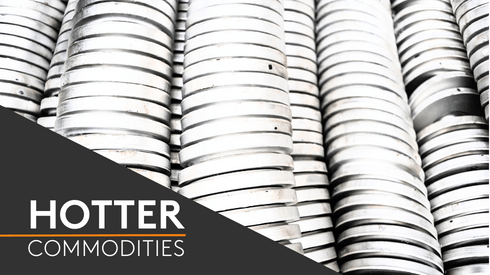The US Department of Energy (DOE) proposed an interpretation of foreign entity of concern (FEOC) in December 2023 that would exclude access to the IRS 30D tax credits to EVs using battery components and critical minerals extracted, processed or recycled by a FEOC.
The proposed rules by the DOE state that companies “owned by, controlled by, or subject to the jurisdiction or direction of a government of a foreign country that is a covered nation” would be designated as a FEOC. This means that any company operating within China will be automatically considered a FEOC under the jurisdictional criteria.
Over the past five years, anode material imports to US have risen by a compound average growth rate (CAGR) of 24% to over 58,000 tonnes in 2023 from around 20,000 tonnes in 2019 in response to increasing EV demand and a growing number of battery plants in the US. Since 2020, China accounts for close to 100% of total anode shipments to the US, of both natural and synthetic graphite anode material. China’s dominance of the sector exceeds its own borders, since even natural graphite anodes producers in South Korea and Japan import spherical graphite raw material from joint ventures in China.
If the proposed FEOC rules are applied, almost no batteries produced in the US will qualify for the 30D tax credit in 2025. Given the extended qualification periods for anode suppliers, typically three to five years, it would be a challenge to replace current anode suppliers before 2027. Furthermore, it appears to be extremely challenging for battery producers to find reliable suppliers of qualifiable anode material at a commercial scale.
In response, major battery producers and OEMs have proposed classifying graphite as a low-value material, which would exempt it from the application of FEOC rules until January 1, 2027. Some OEMs have directly suggested graphite be temporarily excluded from the FEOC rules. This action has faced resistance from North American graphite producers.
A similar situation occurred with the 25% import duties on graphite anodes under China Section 301. Since the introduction of the tariff actions by the Trump administration, anode materials and graphite have been excluded from the tariffs for several years amid strong resistance from major battery producers and OEMs. In the latest public discussions, leading players in the EV supply chain in the US requested extensions of the exclusions for anodes beyond May 31, 2024. The resistance to the tariffs is indicative how reluctant the OEMs are to pay premiums above the current prices of anode supply from Chinese producers.
By 2025 planned graphite anode capacity, based on announcements, is expected to be over 100,000 tonnes in the US. But these plants would be part of relatively new operations that we need to go through a ramp-up period and pass commercial qualification tests with battery producers. Hence, local anode supply will be insufficient to meet the demand of US gigafactories next year.
Development of anode capacity in the US and in other countries outside China has lagged behind gigafactory expansions. The main issue for the Western anode ecosystem has been underinvestment in both mining and processing capabilities due to ample supply from China and the relatively low price of anode materials compared to cathode materials. Neglect of anode production has created a vicious circle in which Western battery producers remain dependent on Chinese anode supply, while potential anode producers outside China struggle to obtain finance and to secure offtake agreements at prices that would enable returns to their investors.
It took China over a decade to build the anode capacity and know-how it has today, while anode producers in the West face significant pressure to develop capabilities within a limited timeframe and under an aggressive pricing environment.
If the EV supply chain in the US is to avoid a lithium pricing scenario in North America over the next few years, significantly higher investment in the anode supply chain will be essential.
Understand the dynamics of the graphite market
Keep up with the latest news, market intelligence and trends in the graphite market when you visit our dedicated graphite market page.
Get an in-depth, 10-year view into where and when graphite supply will come online with our graphite long-term forecast.






